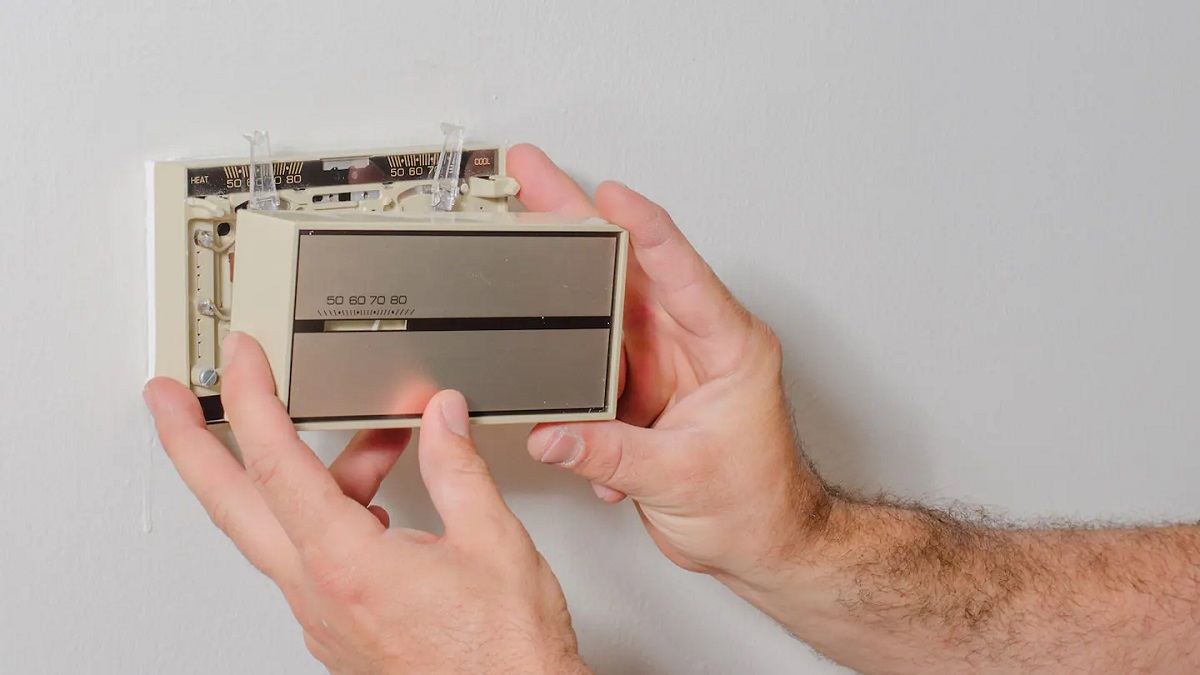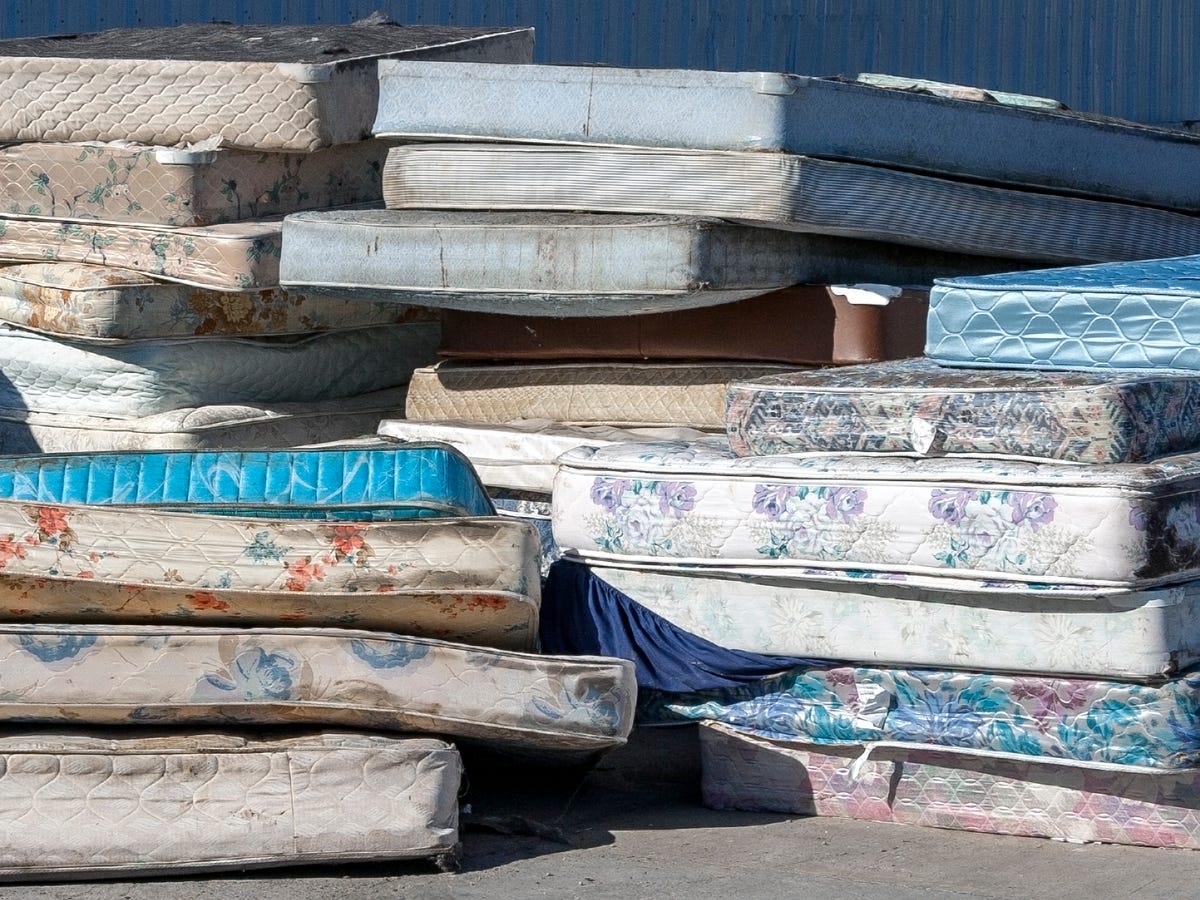Home>Home Appliances>Home Automation Appliances>How To Get Rid Of The Mercury Thermostat


Home Automation Appliances
How To Get Rid Of The Mercury Thermostat
Modified: January 24, 2024
Learn how to safely dispose of mercury thermostats at home. Follow our guide for proper disposal and protect the environment. Keep your home safe and eco-friendly.
(Many of the links in this article redirect to a specific reviewed product. Your purchase of these products through affiliate links helps to generate commission for Storables.com, at no extra cost. Learn more)
Certainly! Here's the introduction for the article:
Introduction
Welcome to the age of smart homes and eco-friendly living, where technological advancements have revolutionized the way we control the temperature in our living spaces. However, amidst the convenience and comfort provided by modern thermostats, there lies a concern that demands immediate attention: the safe disposal of mercury thermostats. In this comprehensive guide, we will delve into the dangers posed by mercury thermostats, the legal requirements for their disposal, and the steps for safely removing and disposing of these devices. Additionally, we will explore eco-friendly alternatives to mercury thermostats, empowering you to make informed decisions that align with sustainability and safety.
As we embark on this journey, it’s crucial to recognize the environmental impact of mercury-containing devices and the significance of adopting responsible practices for their disposal. Let’s navigate through the intricacies of mercury thermostats and equip ourselves with the knowledge needed to ensure a safer and greener future for our homes and the planet.
Key Takeaways:
- Mercury thermostats pose serious health and environmental risks due to the presence of mercury, a harmful substance. It’s crucial to follow legal requirements for their safe disposal to protect our health and the planet.
- Safely removing and disposing of mercury thermostats is essential to prevent mercury contamination. Embracing eco-friendly alternatives, like digital and smart thermostats, promotes sustainability and reduces environmental impact.
Understanding the Dangers of Mercury Thermostats
Mercury thermostats, once a common fixture in households, pose significant environmental and health hazards due to the presence of mercury, a potent neurotoxin. The small glass vial within these thermostats contains a silver liquid metal, which is elemental mercury. Despite being a highly effective conductor of electricity, mercury presents grave risks when mishandled or improperly disposed of.
Exposure to mercury vapor, whether through inhalation or skin contact, can lead to a range of health complications, particularly affecting the nervous system, kidneys, and lungs. Even at low levels of exposure, mercury can accumulate in the body over time, causing long-term health issues. Furthermore, the improper disposal of mercury thermostats can result in the release of mercury into the environment, where it can contaminate soil and water sources, ultimately entering the food chain and posing risks to wildlife and human populations.
Recognizing the severity of these dangers, regulatory bodies and environmental agencies have intensified their efforts to phase out the use of mercury-containing devices, including thermostats. By understanding the inherent risks associated with mercury thermostats, individuals and communities can take proactive measures to mitigate these dangers and transition to safer, more sustainable alternatives.
Legal Requirements for Disposing of Mercury Thermostats
In response to the environmental and health risks posed by mercury-containing products, legislative bodies have enacted specific regulations governing the disposal of mercury thermostats. These regulations aim to minimize the release of mercury into the environment and safeguard public health. It is imperative for individuals and businesses to adhere to these legal requirements when handling and disposing of mercury thermostats.
In the United States, the Environmental Protection Agency (EPA) has established the Mercury-Containing and Rechargeable Battery Management Act (The Battery Act), which addresses the proper management and disposal of mercury-containing thermostats. This legislation mandates that mercury thermostats must be recycled and prohibits their disposal in standard waste streams, such as household trash or recycling bins. Additionally, the EPA has partnered with thermostat manufacturers to create Thermostat Recycling Corporation (TRC), a program dedicated to collecting and safely recycling out-of-service mercury thermostats.
Furthermore, several states have implemented their own regulations regarding the disposal of mercury thermostats, often requiring the use of certified recycling facilities or collection programs. For instance, California’s Thermostat Recycling Act mandates that thermostat manufacturers must establish and maintain a collection program to ensure the proper recycling of mercury-containing thermostats. Similar state-specific regulations exist across the country, reflecting a concerted effort to minimize the impact of mercury on public and environmental health.
It is crucial for individuals and businesses to familiarize themselves with the specific legal requirements governing the disposal of mercury thermostats in their region. By complying with these regulations, we can collectively mitigate the environmental and health risks associated with mercury and contribute to the responsible management of hazardous waste.
Steps for Safely Removing a Mercury Thermostat
When it comes to the safe removal of a mercury thermostat, following proper procedures is essential to minimize the risk of mercury exposure and ensure responsible disposal. Whether you are upgrading to a digital thermostat or replacing a malfunctioning unit, the following steps will guide you through the process of safely removing a mercury thermostat:
- Turn Off Power: Begin by turning off the power supply to the thermostat at the circuit breaker to prevent any electrical hazards during the removal process.
- Remove the Cover: Carefully remove the cover of the thermostat to access the wiring and the mercury-containing vial. Take note of the existing wiring configuration to facilitate the installation of the new thermostat.
- Disconnect Wires: Using caution and appropriate tools, disconnect the wires from the terminals on the thermostat base. Take a photograph or label the wires to ensure accurate reconnection with the new thermostat.
- Remove the Thermostat: Gently detach the thermostat from the wall, ensuring that the mercury vial remains intact and undisturbed. Handle the thermostat with care to prevent any potential breakage or spillage.
- Secure the Mercury Vial: If the mercury vial is removable, carefully place it in a sealable container, ensuring that it remains upright to prevent any leakage. Be mindful of local regulations regarding the handling and transportation of mercury-containing items.
- Seal and Label: Seal the container securely and label it as “Mercury Thermostat for Proper Disposal” to alert recycling or disposal facilities of its contents.
- Dispose Responsibly: Contact a certified hazardous waste disposal facility or a designated collection program to ensure the proper recycling and disposal of the mercury thermostat and its components. Adhere to all legal requirements and guidelines for transporting hazardous materials.
By meticulously following these steps, individuals can safely remove mercury thermostats from their homes or facilities, mitigating the risk of mercury exposure and contributing to environmentally responsible waste management practices.
Contact your local hazardous waste disposal facility for proper disposal of the mercury thermostat. Do not throw it in the trash.
Proper Disposal Methods for Mercury Thermostats
Disposing of mercury thermostats requires a conscientious approach to ensure the safe and environmentally responsible management of these hazardous materials. By adhering to proper disposal methods, individuals can prevent mercury contamination and contribute to sustainable waste management practices. Below are the recommended disposal methods for mercury thermostats:
- Recycling Programs: Utilize certified recycling programs or collection facilities specifically designed for mercury-containing thermostats. Many thermostat manufacturers participate in recycling initiatives, such as the Thermostat Recycling Corporation (TRC) in the United States, which provides convenient collection sites for out-of-service mercury thermostats.
- Authorized Hazardous Waste Facilities: Contact local hazardous waste management facilities or environmental agencies to identify authorized drop-off locations for mercury thermostats. These facilities are equipped to handle and process hazardous materials in compliance with environmental regulations.
- Mail-Back Programs: Some regions offer mail-back programs for the safe disposal of mercury-containing devices. These programs allow individuals to securely package and mail the thermostat to designated recycling centers or hazardous waste facilities.
- Professional Services: Engage the services of licensed hazardous waste management companies that specialize in the proper handling and disposal of mercury-containing products. These professionals have the expertise and resources to ensure the safe transport and recycling of mercury thermostats.
Before initiating the disposal process, it is essential to securely package the mercury thermostat and its components to prevent breakage or leakage during transportation. Sealable containers, padded packaging materials, and clear labeling indicating the presence of mercury are critical for safe handling and transportation.
When selecting a disposal method, individuals should prioritize options that align with local regulations and environmental guidelines. By choosing responsible disposal methods, we can collectively minimize the impact of mercury on public health and the environment, contributing to sustainable waste management practices and the preservation of natural ecosystems.
Read also: 10 Amazing Mercury Thermostat For 2024
Alternatives to Mercury Thermostats
As the awareness of environmental and health risks associated with mercury thermostats continues to grow, the market has witnessed a surge in innovative alternatives that offer efficient temperature control without the use of mercury. These alternatives not only prioritize safety and sustainability but also embrace the latest advancements in home automation and energy efficiency. Let’s explore some of the notable alternatives to mercury thermostats:
- Digital Programmable Thermostats: Digital thermostats provide precise temperature control and customizable programming options, allowing users to set heating and cooling schedules to optimize energy usage. These thermostats often feature user-friendly interfaces and wireless connectivity for remote access and energy monitoring.
- Smart Thermostats: Smart thermostats integrate advanced technologies, including artificial intelligence and machine learning, to adapt to users’ preferences and optimize energy consumption. With features such as occupancy sensing, geofencing, and compatibility with smart home ecosystems, smart thermostats offer unparalleled convenience and energy-saving capabilities.
- Wi-Fi Enabled Thermostats: Wi-Fi thermostats enable remote temperature adjustments and energy monitoring via smartphone applications or web interfaces. These thermostats provide real-time access to temperature settings and energy usage data, empowering users to make informed decisions for efficient heating and cooling.
- Programmable Electronic Thermostats: Electronic thermostats with programmable settings offer energy-saving benefits by allowing users to schedule temperature adjustments based on daily routines. These thermostats are user-friendly and contribute to reduced energy consumption without the use of mercury.
By embracing these alternatives, individuals and businesses can transition away from mercury thermostats and embrace sustainable, technologically advanced solutions for indoor climate control. The adoption of these alternatives not only mitigates the environmental and health risks associated with mercury but also contributes to energy conservation and the reduction of electronic waste.
Furthermore, the availability of incentives and rebates for energy-efficient thermostat upgrades incentivizes the transition to eco-friendly alternatives, promoting a greener and more sustainable approach to home heating and cooling.
Conclusion
As we conclude our exploration of the safe disposal of mercury thermostats and the adoption of eco-friendly alternatives, it is evident that responsible waste management and sustainable technology choices play a pivotal role in safeguarding public health and preserving the environment. The inherent dangers of mercury-containing thermostats underscore the importance of informed decision-making and proactive measures to ensure their safe removal and disposal.
By understanding the legal requirements for disposing of mercury thermostats, individuals and businesses can align their actions with environmental regulations, contributing to the reduction of hazardous waste and the protection of ecosystems. Compliance with these regulations not only mitigates the risks associated with mercury exposure but also fosters a culture of environmental stewardship and regulatory adherence.
Furthermore, the availability of certified recycling programs, hazardous waste facilities, and mail-back options provides accessible avenues for the proper disposal of mercury thermostats. These resources empower individuals to participate in sustainable waste management practices, minimizing the impact of mercury on the environment and public health.
Embracing alternatives to mercury thermostats, such as digital programmable thermostats, smart thermostats, and Wi-Fi enabled thermostats, represents a proactive step towards energy efficiency and sustainability. The integration of advanced technologies and energy-saving features in these alternatives not only enhances comfort and convenience but also reduces the reliance on mercury-containing devices, contributing to a safer and greener future.
As we navigate the evolving landscape of home automation and environmental responsibility, the transition away from mercury thermostats signifies a collective commitment to sustainable living and conscientious waste management. By prioritizing the safe removal and disposal of mercury thermostats and embracing eco-friendly alternatives, we can pave the way for a healthier, more sustainable tomorrow, where technology and environmental preservation harmoniously coexist.
Let us continue to champion responsible practices, informed choices, and technological innovation, shaping a world where our homes are not only comfortable and efficient but also mindful of the well-being of our planet and its inhabitants.
Frequently Asked Questions about How To Get Rid Of The Mercury Thermostat
Was this page helpful?
At Storables.com, we guarantee accurate and reliable information. Our content, validated by Expert Board Contributors, is crafted following stringent Editorial Policies. We're committed to providing you with well-researched, expert-backed insights for all your informational needs.















0 thoughts on “How To Get Rid Of The Mercury Thermostat”